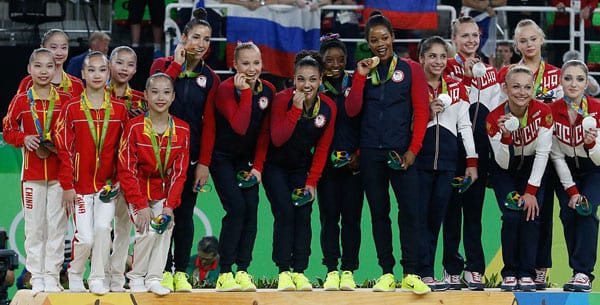
December 5, 2018; Wall Street Journal, NPR, and Washington Post
USA Gymnastics’ public relations were shattered last year—first by revelations of sexual abuse by Dr. Larry Nassar, and then by the extraordinarily poor handling of the situation by USAG “leadership.” After losing their major sponsors and cycling through three CEOs, the organization has filed for Chapter 11 bankruptcy, but its reasons for doing so seem unclear.
The tone of public opinion surrounding the move is not significantly different from that surrounding some previous management bungles, such as the failure to dismiss culpable board members in a timely manner and the clumsy way USAG managed the CEO search process.
Kathryn Carson, the recently elected chair of the USA Gymnastics Board of Directors, said in a statement,
We owe it to the survivors to resolve, fully and finally, claims based on the horrific acts of the past and, through this process, seek to expedite resolution and help them move forward…The Chapter 11 filing and the expedited resolution of these claims are critical first steps in rebuilding the community’s trust…the filing will allow us to continue the important work of supporting our outstanding gymnasts at all levels, including the current and next generation of Olympic hopefuls.
Sign up for our free newsletters
Subscribe to NPQ's newsletters to have our top stories delivered directly to your inbox.
By signing up, you agree to our privacy policy and terms of use, and to receive messages from NPQ and our partners.
Rebecca Davis O’Brien and Katy Stech Ferek of the Wall Street Journal called the move “a dramatic step for an embattled organization” and said that it “casts into doubt USA Gymnastics’ future as the custodian of the sport for tens of thousands of athletes across the US.”
John Manly, a lawyer representing more than 100 survivors awaiting compensation, said claiming that the goal of the filing was to expedite payments was “a transparent falsehood” and “laughable.” O’Brien and Ferek said that the filing may give USAG a chance to put together a pool of money to pay the victims, but it also “puts an automatic stop—perhaps permanently, depending on a judge’s ruling—to depositions and discovery in lawsuits filed by Nassar’s victims.” Manly told ESPN that the filing is the “inevitable result of the inability of this organization to meet its core responsibility of protecting its athlete members from abuse.”
USAG expressed the hope that the bankruptcy filing would also stop or slow USOC’s Section 8 complaint, which they filed to begin the process of revoking USAG’s status as the governing body of US gymnastics. However, USOC spokesman Patrick Sandusky told the Associated Press, “While we fully understand that USAG believes this restructuring will begin to solve deficiencies we’ve identified, the filing does not impact our Section 8 complaint and that process will move forward.”
What is the point of this move? Will it actually help survivors? USAG’s statement points out that they do not have sufficient assets to pay the claims filed against them, which is true; their 2016 Form 990 lists about $3 million, and the bankruptcy filing will give them some time to get money together, although the insurance they already had was sufficient to cover it. Was this a desperate flail by an organization that had not been seen as taking dramatic enough steps to rectify a crippling problem? We will watch and see where their focus is now that the brakes have been applied.—Erin Rubin













